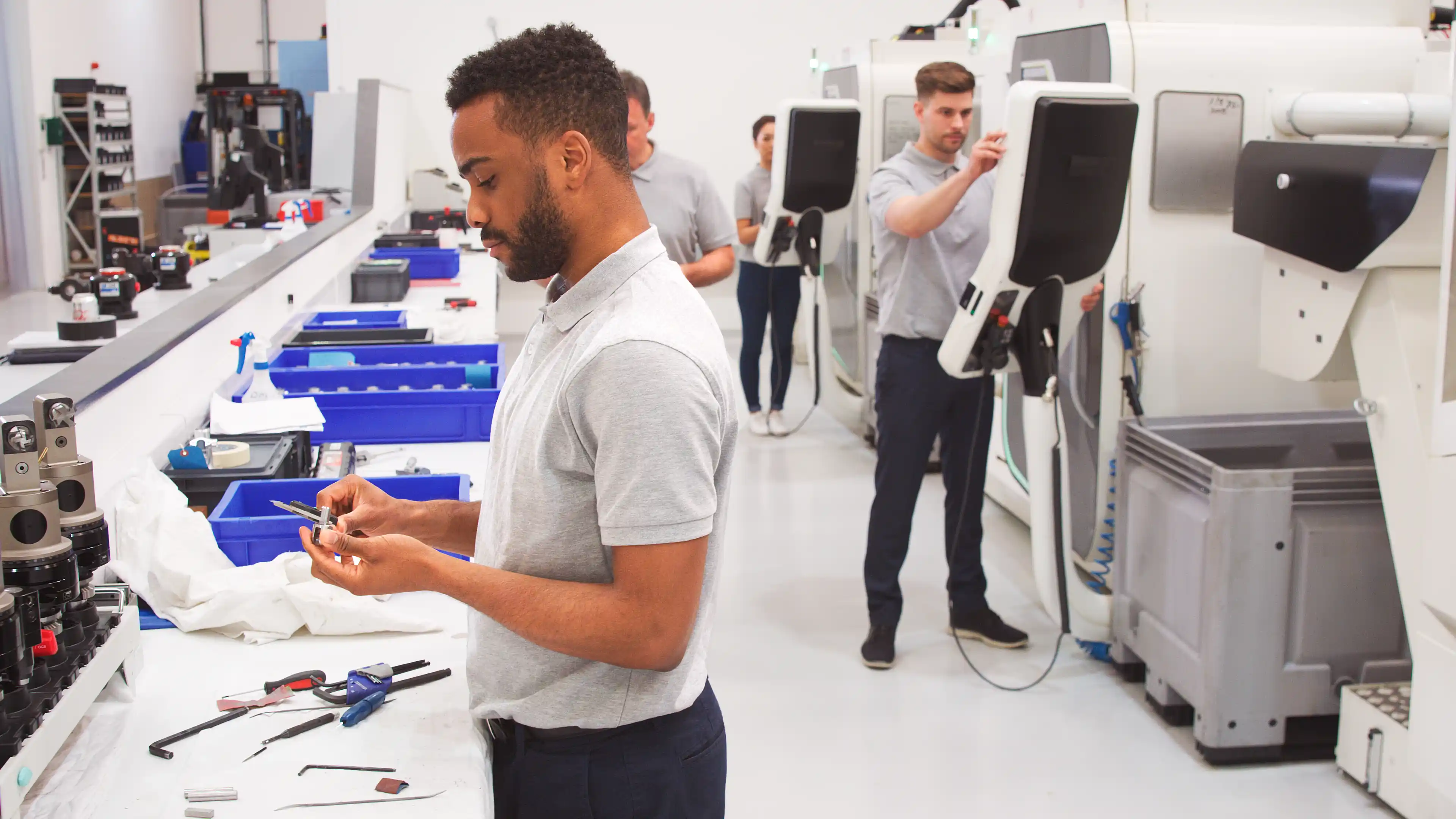
Automation, sustainably
Date
03/06/2024
Category
Future Skills Hub , News
Enginuity's guest blog post by Fraser Harper, co-author of the Green Edge
Some years ago, my summer job – working nightshift at what was, at that time, a Rank Hovis McDougall bakery in Warmley, Bristol – almost came to an abrupt and premature end. Sandwiched between the proving belt and the tunnel oven churning out Mother’s Pride by the thousand, my first assignment – transferring four loaves at a time from the proving belt into the oven itself – was hot, noisy and, for soft student hands working inside rough hessian mitts, blisteringly hard.
Fortunately, after two shifts, my next assignment was to pick and load the bread wagons queued up in the cool of the yard at the back of the factory. That assignment, thankfully, remained in place for the rest of the summer; although I did learn later that the average tenure at the oven loading station was only a week or two, even for work-hardened employees of the non-student variety.
Role of automation in modern manufacturing
During my recent conversation for the Enginuity Future Skills Hub Podcast with Mike Wilson, Chief Automation Officer at the High Value Manufacturing Catapult’s Manufacturing Technology Centre (MTC), I was interested to hear that this type of uncomfortable job is now a prime candidate for automation.
Besides merely replacing a manual job that few people would want anyway, Mike explained how automating the loading can improve an oven’s throughput, even to the point where, with vertical ovens, the automated unloading and reloading of each shelf in a single pass – not feasible with a single human operator – can effectively halve the time to bake each batch of rolls, buns or whatever happens to be going through at the time.
So, a good example of an automation ‘no-brainer’, perhaps. A more regular narrative, though, is that automation represents a threat. The argument is well-trodden: automation can lead to the displacement of workers who perform repetitive or routine tasks; if these displaced workers are unable to adapt to new job requirements or if there are not enough new jobs created to offset those lost to automation, then unemployment beckons; if this happens on a large-scale, the gap between the automation-savvy and the rest of society widens and even social disruption may result.
Benefits of sustainable automation
Somewhere between automating jobs that no-one wants and automation as the destroyer of society as we know it, the case for the middle ground is sustainable automation. This is all about automation strategies that not only look for the immediate business benefits – reduced energy costs, more efficient use of materials, reduced labour costs (perhaps) – but also take a more holistic view of the impact of automation on the environmental footprint of a company, along with the overall value of its human capital.

The three pillars of sustainable automation. Image: TGE
Environmental impact can often be tied in with the financial case. Sustainable automation seeks to minimise resource usage and waste generation by optimising production processes, reducing material inputs, and recycling or repurposing waste materials. All of these can have a beneficial cost impact. But linking an automation strategy with a human capital strategy may require a little more analysis. Implementing sustainable automation often requires upskilling or reskilling workers to operate and maintain automated systems. And, while automation may eliminate some manual tasks, it can also create new roles in areas such as system monitoring, data collection and analysis, and maintenance.
Therefore, a human capital strategy that focuses on continuous learning and development, and emphasises job creation and retention, can ensure employees have the necessary skills to adapt in a technologically advancing environment and can help mitigate the potential negative impacts of automation on employment levels. In the long run it can prove more economically sustainable for firms to build their human capital strategies around talent mobility aligned to their technology strategies for automation and future operations.
Workforce challenges
So, there’s a carrot for sustainable automation. But there’s also a stick. According to the Office for National Statistics (ONS), current job vacancies in UK manufacturing stand at around 65,000, a fall from the post-pandemic peak of 95,000 in 2022 but still not recovered to the pre-pandemic levels of around 55,000. Manufacturing companies – many of them small or medium-sized – are struggling to fill important slots in the workforce. For a sizable number of those slots, automation – accompanied perhaps by a smart re-jig of the team – may be the only viable alternative.
Demystify the skills, trends and transitions reshaping industries within the UK’s engineering and manufacturing sector with the Future Skills Hub.
Explore nowMore news



